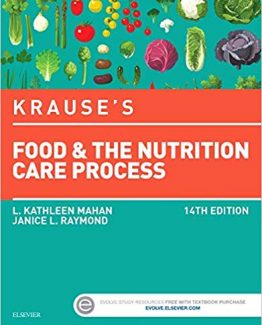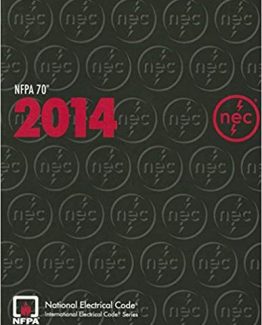Molecular Biology of the Cell Seventh Edition by Bruce Alberts, ISBN-13: 978-0393884821
[PDF eBook eTextbook]
- Publisher: W. W. Norton & Company; Seventh edition (July 1, 2022)
- Language: English
- 1552 pages
- ISBN-10: 0393884821
- ISBN-13: 978-0393884821
The definitive text in cell biology.
For more than four decades, Molecular Biology of the Cell has distilled the vast amount of scientific knowledge to illuminate basic principles, enduring concepts, and cutting-edge research. The Seventh Edition has been extensively revised and updated with the latest research, and has been thoroughly vetted by experts and instructors. The classic companion text, The Problems Book, has been reimagined as the Digital Problems Book in Smartwork, an interactive digital assessment course with a wide selection of questions and automatic-grading functionality.
Table of Contents:
Cover
Half Title
Publisher’s Notice
Title Page
Copyright
Preface
Note to the Reader
Nomenclature for Genes and Proteins
Resources for Instructors
About the Authors
Acknowledgments
Brief Contents
Special Features
Contents
Part I: Introduction to the Cell
Chapter 1: Cells, Genomes, and the Diversity of Life
The Universal Features of Life on Earth
Genome Diversification and the Tree of Life
Eukaryotes and the Origin of the Eukaryotic Cell
Model Organisms
Problems
References
Chapter 2: Cell Chemistry and Bioenergetics
The Chemical Components of a Cell
Catalysis and the Use of Energy By Cells
How Cells Obtain Energy From Food
Problems
References
Chapter 3: Proteins
The Atomic Structure of Proteins
Protein Function
Problems
References
Part II: Basic Genetic Mechanisms
Chapter 4: DNA, Chromosomes, and Genomes
The Structure and Function of DNA
Chromosomal DNA and its Packaging in the Chromatin Fiber
The Effect of Chromatin Structure on DNA Function
The Global Structure of Chromosomes
How Genomes Evolve
Problems
References
Chapter 5: DNA Replication, Repair, and Recombination
The Maintenance of DNA Sequences
DNA Replication Mechanisms
The Initiation and Completion of DNA Replication in Chromosomes
DNA Repair
Homologous Recombination
Transposition and Conservative Site-Specific Recombination
Problems
References
Chapter 6: How Cells Read the Genome: From DNA to Protein
From DNA to RNA
From RNA to Protein
The RNA World and the Origins of Life
Problems
References
Chapter 7: Control of Gene Expression
An Overview of Gene Control
Control of Transcription by Sequence-Specific DNA-Binding Proteins
Transcription Regulators Switch Genes on and Off
Molecular Genetic Mechanisms That Create and Maintain Specialized Cell Types
Mechanisms That Reinforce Cell Memory in Plants and Animals
Post-Transcriptional Controls
Regulation of Gene Expression by Noncoding Rnas
Problems
References
Part III: Ways of Working With Cells
Chapter 8: Analyzing Cells, Molecules, and Systems
Isolating Cells and Growing Them in Culture
Purifying Proteins
Analyzing-Proteins
Analyzing and Manipulating DNA
Studying Gene Function and Expression
Mathematical Analysis of Cell Function
Problems
References
Chapter 9: Visualizing Cells and Their Molecules
Looking at Cells and Molecules in the Light Microscope
Looking at Cells and Molecules in the Electron Microscope
Problems
References
Part IV: Internal Organization of the Cell
Chapter 10: Membrane Structure
The Lipid Bilayer
Membrane Proteins
Problems
References
Chapter 11: Small-Molecule Transport and Electrical Properties of Membranes
Principles of Membrane Transport
Transporters and Active Membrane Transport
Channels and the Electrical Properties of Membranes
Problems
References
Chapter 12: Intracellular Organization and Protein Sorting
The Compartmentalization Of Cells
The Endoplasmic Reticulum
Peroxisomes
The Transport of Proteins into Mitochondria and Chloroplasts
The Transport of Molecules Between the Nucleus and the Cytosol
Problems
References
Chapter 13: Intracellular Membrane Traffic
Mechanisms of Membrane Transport and Compartment Identity
Transport from the Endoplasmic Reticulum Through the Golgi Apparatus
Transport From the Trans Golgi Network to the Cell Exterior and Endosomes
Transport into the Cell from the Plasma Membrane: Endocytosis
The Degradation and Recycling of Macromolecules in Lysosomes
Problems
References
Chapter 14: Energy Conversion and Metabolic Compartmentation: Mitochondria and Chloroplasts
The Mitochondrion
The Proton Pumps of the Electron-Transport Chain
ATP Production in Mitochondria
Chloroplasts and Photosynthesis
The Genetic Systems of Mitochondria and Chloroplasts
Problems
References
Chapter 15: Cell Signaling
Principles of Cell Signaling
Signaling Through G-Protein-Coupled Receptors
Signaling Through Enzyme-Coupled Receptors
Alternative Signaling Routes in Gene Regulation
Signaling in Plants
Problems
References
Chapter 16: The Cytoskeleton
Function and Dynamics of the Cytoskeleton
Actin
Myosin and Actin
Microtubules
Intermediate Filaments and Other Cytoskeletal Polymers
Cell Polarity and Coordination of the Cytoskeleton
Problems
References
Chapter 17: The Cell Cycle
Overview of the Cell Cycle
The Cell-Cycle Control System
S Phase
Mitosis
Cytokinesis
Meiosis
Control of Cell Division and Cell Growth
Problems
References
Chapter 18: Cell Death
Problems
References
Part V: Cells in Their Social Context
Chapter 19: Cell Junctions and the Extracellular Matrix
Cell-Cell Junctions
The Extracellular Matrix of Animals
Cell-Matrix Junctions
The Plant Cell Wall
Problems
References
Chapter 20: Cancer
Cancer as a Microevolutionary Process
Cancer-Critical Genes: How They are Found and What They Do
Cancer Prevention and Treatment: Present and Future
Problems
References
Chapter 21: Development of Multicellular Organisms
Overview of Development
Mechanisms of Pattern Formation
Developmental Timing
Morphogenesis
Growth
Problems
References
Chapter 22: Stem Cells in Tissue Homeostasis and Regeneration
Stem Cells and Tissue Homeostasis
Control of Stem-Cell Fate and Self-Renewal
Regeneration and Repair
Cell Reprogramming and Pluripotent Stem Cells
Problems
References
Chapter 23: Pathogens and Infection
Introduction to Pathogens
Cell Biology of Pathogen Infection
The Human Microbiota
Problems
References
Chapter 24: The Innate and Adaptive Immune Systems
The Innate Immune System
Overview of the Adaptive Immune System
B Cells and Immunoglobulins
T Cells and MHC Proteins
Problems
References
Glossary
Index
About the Covers
Bruce Alberts received his PhD from Harvard University and is the Chancellor’s Leadership Chair in Biochemistry and Biophysics for Science and Education, University of California, San Francisco. He was the editor in chief of Science magazine from 2008 until 2013, and for 12 years he served as president of the U.S. National Academy of Sciences (1993–2005).
Rebecca Heald is an American professor of cell and developmental biology. She is currently a professor in the Department of Molecular and Cell Biology at the University of California, Berkeley. In May 2019, she was elected to the National Academy of Sciences.
Alexander Johnson received his PhD from Harvard University and is a professor of microbiology and immunology at the University of California, San Francisco. He is a member of the National Academy of Sciences.
David Morgan received his PhD from the University of California, San Francisco, and is a professor in the Department of Physiology as well as the vice dean for research for the School of Medicine. Dave is a fellow of the Royal Society of London.
Martin Raff received his MD from McGill University and is emeritus professor of biology at the Medical Research Council Laboratory for Molecular Cell Biology at University College London. He is a foreign member of the National Academy of Sciences.
What makes us different?
• Instant Download
• Always Competitive Pricing
• 100% Privacy
• FREE Sample Available
• 24-7 LIVE Customer Support






Reviews
There are no reviews yet.